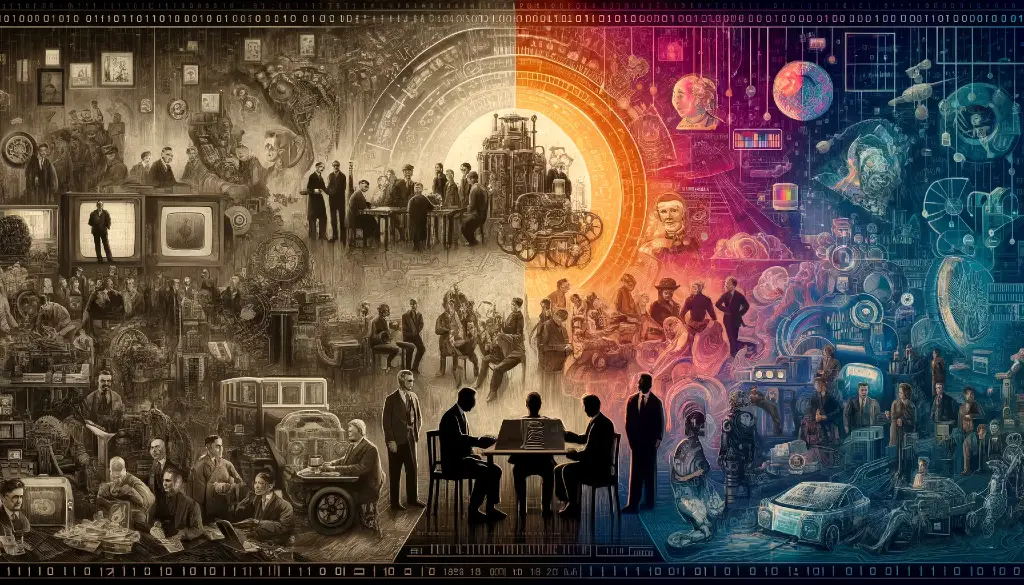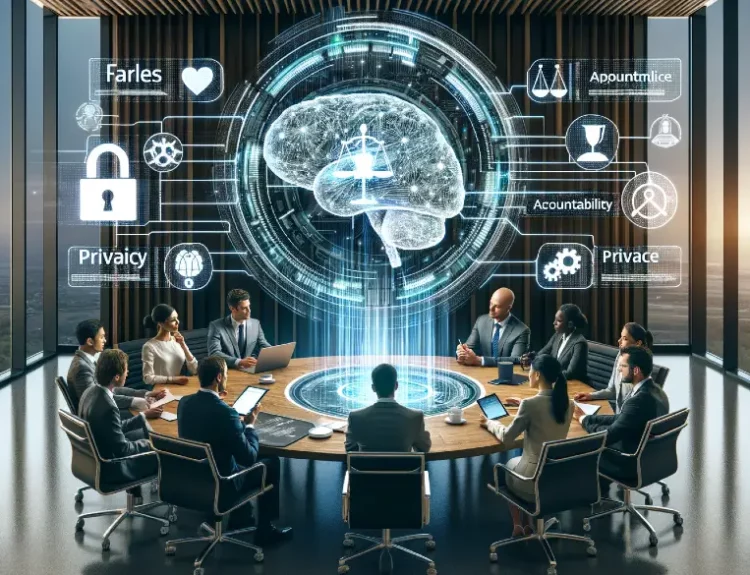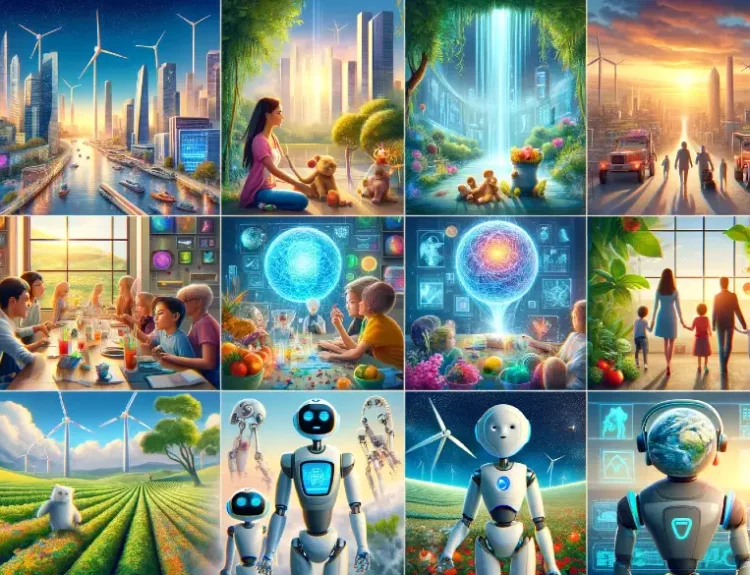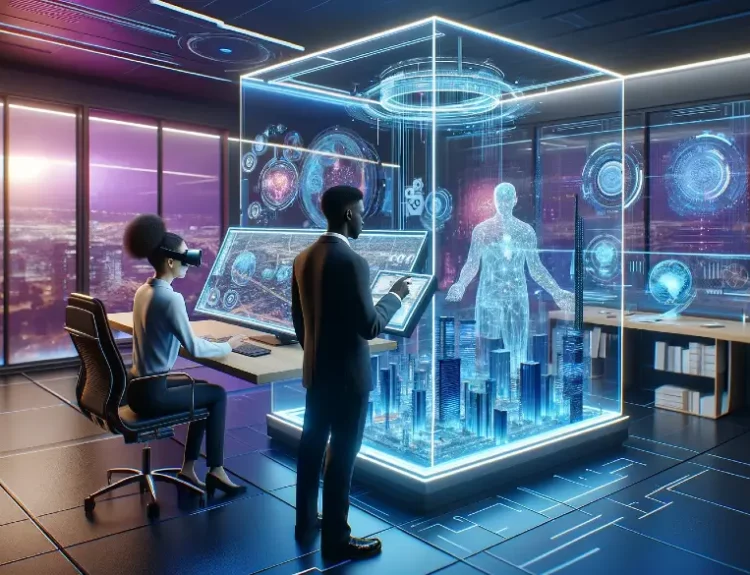- Introduction
- The Seeds of AI: The Early Days (Pre-1940s)
- Birth of Modern AI: The Pioneering Years (1940s-1950s)
- Early Successes and Struggles: The Rollercoaster Ride (1950s-1990s)
- The Rise of Machine Learning and Deep Learning (1990s-Present)
- The Impact of AI on Computing (Focus on Historical Impact)
- Paving the Way: Contributions of AI Pioneers
- The Ever-Evolving Landscape
- Conclusion
Introduction
Imagine a world where machines can think, learn, and even adapt like humans. Science fiction, right? Not anymore! Artificial Intelligence (AI) is no longer the stuff of futuristic movies. It’s rapidly becoming a reality, transforming the very fabric of computing as we know it.
But how did we get here? This blog will take you on a fascinating journey through the history of AI in computing. We’ll delve into the early dreams of creating intelligent machines, explore the groundbreaking work of pioneering researchers, and witness the incredible advancements that continue to shape the future.
Get ready to discover:
- How ancient myths sparked the desire to build thinking machines.
- The pivotal role of the digital computer in birthing modern AI.
- The triumphs and challenges that have defined the evolution of AI research.
- How AI has revolutionized the way we use computers.
- The inspiring contributions of AI’s leading figures.
- The exciting possibilities that lie ahead for AI applications.
So, buckle up and join us on this incredible exploration of AI’s remarkable journey in computing! You might just be surprised by what you learn.
The Seeds of AI: The Early Days (Pre-1940s)
Long before the whirring of supercomputers and the buzz of complex algorithms, the seeds of AI were sown in the fertile ground of human imagination. Ancient myths like Pygmalion’s Galatea, a sculpted woman brought to life, and tales of automatons – self-moving machines – hinted at our fascination with creating intelligent beings.
These weren’t just fantastical stories. Philosophers like René Descartes pondered the potential for machines to exhibit thought-like behavior. Even Leonardo da Vinci, the quintessential Renaissance Man, sketched designs for mechanical creatures, laying the groundwork for the concept of artificial intelligence.
The early days also saw the development of mechanical calculators like the Pascaline and Leibniz Stepped Reckoner. These marvels of engineering, though far from intelligent, showcased the possibility of machines performing complex tasks. They were the first baby steps in our quest to build thinking machines, paving the way for the revolutionary advancements that were yet to come.
Birth of Modern AI: The Pioneering Years (1940s-1950s)
The 1940s and 1950s witnessed the birth of modern AI, a period where science fiction started to blur with scientific reality. The invention of the digital computer in the 1940s became the crucial foundation. These machines, unlike their mechanical predecessors, could manipulate symbols and perform complex calculations, mimicking the basic functions of the human brain.
This era saw the rise of several pioneering figures who laid the groundwork for the future of AI. Alan Turing, a brilliant mathematician and codebreaker during World War II, proposed the now-famous Turing Test—a benchmark for a machine’s ability to exhibit intelligent behavior equivalent to, or indistinguishable from, that of a human.
Meanwhile, Warren McCulloch and Walter Pitts, inspired by the human nervous system, developed the concept of artificial neural networks. These simulated networks of interconnected nodes, like simplified neurons, laid the groundwork for the powerful machine learning techniques used today.
The year 1956 marked a significant milestone with the Dartmouth Summer Research Project. This gathering of leading minds in computer science and mathematics, including John McCarthy who coined the term “Artificial Intelligence,” is widely considered the birthplace of AI research. Here, researchers discussed the possibility of building machines that could “think” and “learn,” setting the ambitious agenda for the field in the decades to come.
The pioneering years of AI were filled with optimism and a belief in rapid progress. However, the limitations of the technology and the complexity of human intelligence would soon present challenges that would redefine the trajectory of AI research.
Early Successes and Struggles: The Rollercoaster Ride (1950s-1990s)
The early years of AI research weren’t all smooth sailing. While the 1950s witnessed a surge of optimism, fueled by initial successes like game-playing programs that could beat checkers champions, reality soon set in. These early triumphs were limited in scope, and researchers quickly encountered the formidable challenges posed by human-level intelligence.
The limitations of computing power at the time hampered progress. Early computers lacked the processing speed and memory capacity needed to run complex algorithms that could truly simulate human thought. Additionally, the field grappled with the lack of effective algorithms for tasks like common-sense reasoning and natural language processing.
These limitations led to periods of disillusionment known as “AI Winters.” Funding dried up, and public interest waned as the promised revolution of intelligent machines seemed to recede further into the future. Researchers faced criticism for their overly ambitious claims and a lack of progress on truly groundbreaking applications.
However, even during these winters, the seeds of future advancements were being sown. Researchers continued to refine existing techniques and explore new avenues. The development of knowledge representation systems, for example, aimed to equip machines with a fundamental understanding of the world.
Despite the struggles, the latter part of this period saw a resurgence in AI research. The rise of symbolic AI, which focused on manipulating symbols and logic to represent knowledge, led to the development of expert systems – programs with specialized knowledge in a particular domain. These systems, while not achieving true general intelligence, proved valuable in fields like medicine and finance.
The rollercoaster ride of the 1950s to 1990s highlights the inherent challenges of AI research. It’s a story not just of triumph, but also of perseverance and the constant push to overcome the limitations of technology and understanding. It paved the way for the breakthroughs that would redefine AI in the years to come.
The Rise of Machine Learning and Deep Learning (1990s-Present)
The 1990s marked a turning point in the history of AI. This era witnessed the rise of two crucial approaches that continue to revolutionize the field: Machine Learning (ML) and Deep Learning (DL).
Machine Learning shifted the focus from explicitly programming intelligence to training algorithms on vast amounts of data. This data-driven approach allowed machines to learn and improve their performance on specific tasks without the need for detailed, human-crafted rules. Early successes in areas like image recognition and spam filtering demonstrated the potential of ML.
However, the true game-changer arrived with Deep Learning, a subfield of ML inspired by the structure and function of the human brain. Deep Learning utilizes artificial neural networks with multiple layers, allowing them to extract increasingly complex patterns from data. This breakthrough led to significant advancements in areas like computer vision, natural language processing, and speech recognition.
The rise of powerful computing hardware, particularly Graphics Processing Units (GPUs) with their parallel processing capabilities, further fueled the success of Deep Learning techniques. These advancements allowed for training on massive datasets, leading to even more sophisticated and intelligent AI models.
The impact of Machine Learning and Deep Learning is undeniable. Today, they are ubiquitous, powering applications like:
- Facial recognition systems that unlock smartphones and identify individuals in photos.
- Virtual assistants like Siri and Alexa that respond to voice commands and answer questions.
- Recommendation engines on e-commerce platforms and streaming services that suggest products and content based on user preferences.
- Self-driving cars that use deep learning algorithms to navigate roads and avoid obstacles.
The journey from the early days of AI research to the powerful tools of Machine Learning and Deep Learning has been remarkable. As computing power continues to expand and algorithms become more sophisticated, we can expect even more groundbreaking applications of AI to emerge in the years to come.
The Impact of AI on Computing (Focus on Historical Impact)
The influence of AI on computing extends far beyond the development of intelligent machines. It has fundamentally reshaped the way we interact with computers and pushed the boundaries of what they can achieve:
1. Software Development: AI techniques like automated code generation and bug detection are accelerating the software development process. These tools help developers write code faster and with fewer errors, leading to more efficient and robust software applications.
2. Hardware Optimization: AI algorithms are being used to optimize hardware design and resource allocation. They can analyze system performance and identify bottlenecks, allowing for more efficient utilization of computing resources.
3. Data Analysis: The ability of AI to analyze massive datasets has revolutionized data analytics. AI-powered tools can extract insights from complex data sets that would be impossible to identify with human effort alone. This has led to advancements in fields like scientific research, financial analysis, and marketing.
4. User Interfaces: AI is transforming user interfaces by making them more intuitive and personalized. Natural Language Processing allows for voice commands and chatbots, while computer vision enables gesture recognition and augmented reality experiences. These advancements are creating a more natural and seamless interaction between humans and computers.
Paving the Way: Contributions of AI Pioneers
The journey of AI wouldn’t be possible without the groundbreaking work of pioneering researchers and figures. Here are a few who have left their indelible mark:
- Alan Turing: Credited with the Turing Test, a cornerstone for measuring machine intelligence. His work on theoretical foundations and codebreaking during WWII significantly influenced AI development.
- John McCarthy: Coined the term “Artificial Intelligence” and played a key role in the Dartmouth Summer Research Project that laid the groundwork for the field.
- Marvin Minsky: A prominent figure in early AI research, known for his work on artificial neural networks and connectionism. His contributions helped shape the direction of AI research for decades.
The Ever-Evolving Landscape
The future of AI applications is brimming with possibilities. We can expect AI to continue expanding its reach across numerous domains:
- Healthcare: AI-powered tools can assist with medical diagnosis, personalized treatment plans, and drug discovery.
- Finance: AI can be used for fraud detection, personalized financial advice, and risk management in the financial sector.
- Robotics: AI advancements will enable robots to perform complex tasks in manufacturing, logistics, and even surgery.
- Autonomous Vehicles: Self-driving cars powered by AI have the potential to revolutionize transportation by improving safety and efficiency.
The evolution of AI is a continuous process, and the possibilities are truly endless. As we move forward, it’s crucial to ensure responsible development and ethical considerations are at the forefront to harness the power of AI for the betterment of humanity.
Conclusion
The journey of AI in computing has been nothing short of remarkable. From the fantastical dreams of ancient myths to the powerful applications shaping our world today, AI has come a long way. We’ve witnessed periods of rapid optimism, followed by challenging setbacks, but the relentless pursuit of creating intelligent machines continues to drive progress.
As we look towards the future, AI holds immense potential to improve our lives in countless ways. However, it’s crucial to ensure responsible development and address the ethical considerations that come with such powerful technology.
Here at Verdict, we believe the future of AI lies in collaboration. We’re building a platform where machine learning (ML) and artificial general intelligence (AGI) evolve through real-world interactions and the insights of our community. Every search, chat, and shared result on Verdict contributes to building an AI that understands and grows alongside you.
Join us on this exciting journey! Explore Verdict and be a part of shaping the future of AI.
Looking for more in-depth explorations of AI’s impact? Check out our blog page for fascinating articles like “Unlocking Visual Intelligence: AI Applications in Computer Images” and “Enhancing User Experience: AI Integration in Computer Screens.” We delve deeper into specific applications of AI and their influence on various aspects of computing.
Stay tuned for more insightful content, and together, let’s explore the incredible possibilities that lie ahead for AI!










